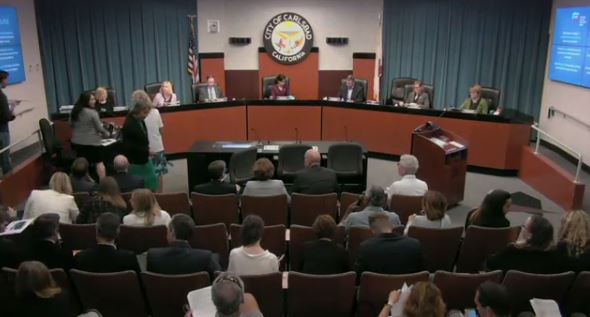The City of Carlsbad needs to build 2,094 very-low and low-income homes over the next ten years. Hope they get busy on approving those granny flats!
CARLSBAD — Housing is arguably the most pressing issue in the state.
As such, every eight years the state determines the number of housing units, known as the Regional Housing Needs Assessment (RHNA), and distributes those totals to each county. From there, the county breaks down the total for each jurisdiction.
In San Diego County, the region was mandated to 171,685 new units for the 2021-29 cycle, according to the California Housing and Community Development Department (HCD). The San Diego Association of Governments presented the numbers during its July 26 board meeting.
For Carlsbad, it means 3,873 new units must be constructed by the deadline. The council also approved a letter to SANDAG in support of the new methodology during its Aug. 20 meeting.
“Those comments will be considered by the SANDAG board on Sept. 6,” said Debbie Fountain, Carlsbad director of community and economic development. “We did prepare the letter … and is recommending support for that methodology.”
The goal is to increase the housing supply, as California is suffering from a housing shortage. According to the state methodology, 65% of RHNA is distributed to each municipality’s relative to its share of transit stations and stops and 35% is based on the share of jobs.
Carlsbad has no major stops per the methodology, but is the region’s third largest employer at 4.76%. And since Carlsbad has a higher average income than most of the county, more affordable housing units are required.
However, the city’s RHNA allotment decreased by 1,126 units compared to the last cycle.
The proposed methodology requires the city to construct 1,310 very-low income housing, 784 low-income, 750 moderate and 1,029 above-moderate units.
The city’s very-low income housing increased by 398 units over the previous cycle, while moderate and above-moderate units decreased by 312 and 1,303, respectively. The county saw an increase of 9,695 units compared to the fifth cycle.
“We also wanted to get some acknowledgement of the great work Carlsbad has been doing for providing low-income housing,” Fountain added.
Councilwoman Cori Schumacher asked Fountain to provide clarification for the public between the fifth and sixth assessments. Fountain said if approved by SANDAG, the city would be responsible for more very low- and low-income units in the sixth cycle compared to the fifth.
Schumacher said the focus this time around is on jobs, while Fountain added the state set specific standards, such as housing being concentrated around job and transit centers.
“It’s a 65-35 split,” Fountain added. “They looked at the jobs-housing balance. They came down to this more data-driven formula.”
One change the city will face is addressing its density requirements under the Housing Element, Fountain said. As such, she said the city will struggle “a lot” with its Growth Management Plan due to the new housing requirements and methodology.
The city’s letter supports the methodology, but also states the city has made significant strides over the past 25 years due to its Inclusionary Housing Ordinance.
https://www.thecoastnews.com/carlsbads-rhna-allotment-decreases/





The State has overstepped and I can only hope enough municipalities join in a challenge. Any pushback will fail but it may spur a Prop 13 type action.
I live [very much like the Carlsbad hillsides] where a car parked on the street overnight is worthy of comment/watching. Granny flats would (okay, will) double road traffic and necessitate new intersection controls. You know, STOP signs and such.
The added density will overload existing water/sewer as well. Interestingly, not electricity nor natgas. Electricity because here in the early 1960s we got all electric 220v 250amp service in anticipation of nuclear energy too cheap to meter. NatGas came in later and having both is a form of competition not all that common these days. Nowadays solar PV is the new competition. New massive infrastructure requirements won’t go on the backs of the newly arrived system breakers, it will be on the captive property owners. And it won’t be a one property, one vote proposition if it gets voted upon at all.
And finally. (Whew! You knew my fingers would get tired). School districts can assess and they will be “welcome stranger” ruthless in a fashion that will multiply the pucker factor of any potential California property owner.